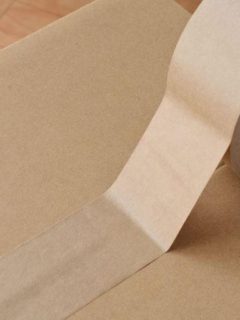Admit it: taping cases together sounds extremely simple! However, there are many factors you need to consider. How do you choose, apply and store your PP or PVC tape? Our packaging experts explain it all to you.
1. Closing boxes with tape: 2 options
For best results, it is best to apply the tape with a temperature above +15 °C, on a dry and clean surface.In winter, it is more difficult to stick tape.When it is cold, there is often moisture, which means you apply your tape with water, which is of course almost impossible.You then have the option of closing your boxes in 2 ways
-
Manually: you can close your cardboard boxes with a tape dispenser in a quick and easy way. Make sure you press your tape down when applying it, otherwise it will come off or crumple. Tape is “pressure sensitive”, which means that you always have to press it down a little after applying it manually.
-
With a machine: a crate sealer closes about 10,000 crates a day without any problems! However, check that the machine has sufficient pressure and maintain it regularly, so that you can pack all your packages without any problems.
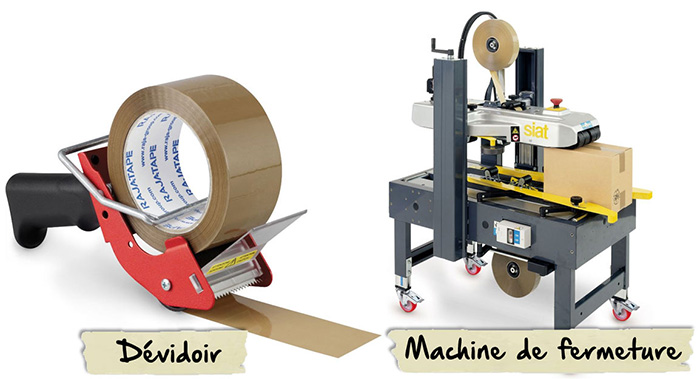
2. Three techniques for applying your tape
| For your packages < 20 kg | ► The closureu-shapedthe closure: apply the tape along the entire length of the box (where the flaps meet), overlapping the sides. |
| For your packages < 40 kg | ► The closurein double U the closure: ideal for transporting your heavy parcels or for parcels stored for longer periods of time. Start with the U-shaped closure along the length and then reinforce it with a second strip along the width. |
| For your parcels of over 40 kg | ► The closureh-shapedis the most secure closure available. Apply tape along the entire length of the box at the top and bottom. You should then stick additional tape across the box to reinforce it. |

3. Which plastic adhesive tape should I choose?
Which is better for you, PP tape or PVC tape? At least remember this: if you want to seal your crates with tape, consider the weight and material
of
your crate
►the strength of your PP or PVC adhesive tape
The thickness (and also the strength) of a polypropylene or PVC tape is expressed in microns (1/1000 mm). The heavier your package, the thicker your tape should be, so it’s best to choose a tape with a high micron value. High-quality polypropylene and PVC tape stick well to all surfaces. If you use cardboard boxes, then choose a gummed tape. This type of tape will often offer you the best solution because the glue will penetrate deep into the fibres of the cardboard box.
su_spacer]
| Thickness of the tape in microns | Weight of your package |
| 28 microns (or less) | ► For light packages, up to 20 kg. |
| 32 microns | ► For medium-heavy packages, up to 30 kg. |
| 35 microns | ► For heavy packages, up to 35 kg. |
| 38 microns (or more) | ► For very heavy parcels, over 35 kg. |
► The adhesive of your PP or PVC tape
- PP with acrylic adhesive(water-based) remains perfectly transparent and is used for the manufacture of “silent” tapes
- PP with synthetic rubber adhesive(hot melt) is cheaper than natural rubber adhesive and sticks almost immediately. However, this adhesive is not suitable for long-term use and is not very resistant to temperature changes.
- PP with natural rubber adhesive (solvent) is the most common adhesive tape. As solvent-based adhesives have a high adhesive strength, they are often used outdoors. Temperature and humidity fluctuations are not a problem (at least in the short term).
- PVC with adhesive natural rubber (solvent) has the best quality and longevity, but is a little more expensive to buy.
► How do you see the difference between PP and PVC?
Pour les distinguer les uns des autres, il faut tester leur élasticité : le ruban PVC peut être étiré beaucoup plus loin que le ruban PP. Un test rapide : étirez un morceau de ruban adhésif et serrez-le. Alors essayez de le percer avec un stylo. Si vous pouvez percer un trou, il s’agit du ruban de PVC. Lorsque la bande se déchire, c’est du PP.
Le ruban de PVC peut souvent être déchiré à la main. Avec le ruban PP, ce n’est pas facile à faire, c’est pourquoi un dévidoir est toujours nécessaire.
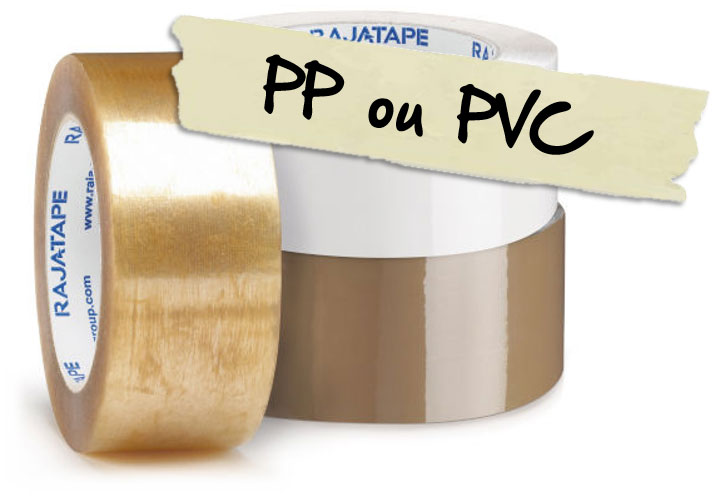
4. How do you store your plastic adhesive tape?
Maintenant que vous avez fait connaissance avec les différentes manières d’utiliser un ruban adhésif PP ou PVC, savez-vous comment vous devez le conserver ? Votre ruban adhésif a besoin de soins particuliers : il est conseillé de le conserver à température ambiante (+18 à +25 °C), dans un lieu sec, protégé du soleil et de préférence dans son emballage d’origine.
Stockez-le debout de façon à ce que l’extrémité du ruban adhésif se retrouve sous le rouleau. Si vous avez des cartons de plusieurs rouleaux, conservez le papier siliconé qui les protège les uns des autres. Vous éviterez ainsi qu’ils ne collent ensemble.
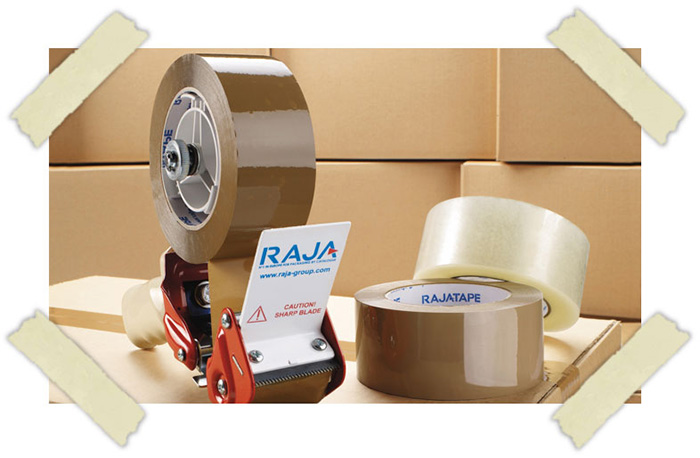
Un ruban adhésif se conserve en moyenne un an. Au-delà, la colle s’effrite. Pensez à vérifier la date de production sur le numéro du lot. Un bon conseil: mesurez votre stock de ruban adhésif avec précision. Vous devez en avoir assez pour ne pas vous retrouver en rupture tout en parvenant à les utiliser avant leur date de
- Store your tape for up to 6 months (polypropylene tape with acrylic glue can easily be stored for up to 1 year)
- The ideal temperature for storage: between +18 and +25 °C.
- Air humidity for storage: maximum 65%.
- If storage temperature < +15 °C: leave the tape in a heated room for at least 24 hours before use.
- If storage temperature > +25 °C: in the short term this will not hurt, however, in the longer term the adhesive may start to “sweat” and run down the roll, which can lead to loss of quality.
5. Tape: protect your parcel from theft
Theft of goods is a real problem in the logistics sector. There are now several tools that can provide proof that the package has not been opened during transport. Adhesive tapes, too, are useful
- Gummed tapeis one of the most effective closures for cardboard boxes. The glue gets into the cardboard and the ripping is directly noticeable once you want to open it.
- Security tape leaves a break-in message (it says “opened“) so you can see if the box has been opened.
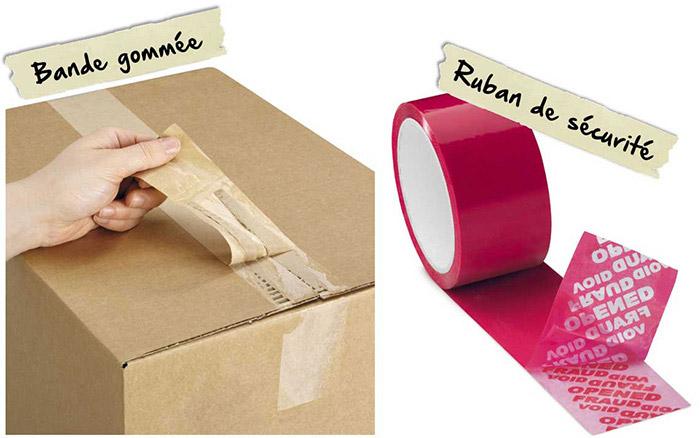
- Apply the tape at a temperature above +15°C.
- The H-seal is the most secure closure.
- Take into account the strength and type of adhesive of your tape
- Store the tape at room temperature for up to 6 months.
- Use security tapes to detect theft attempts











